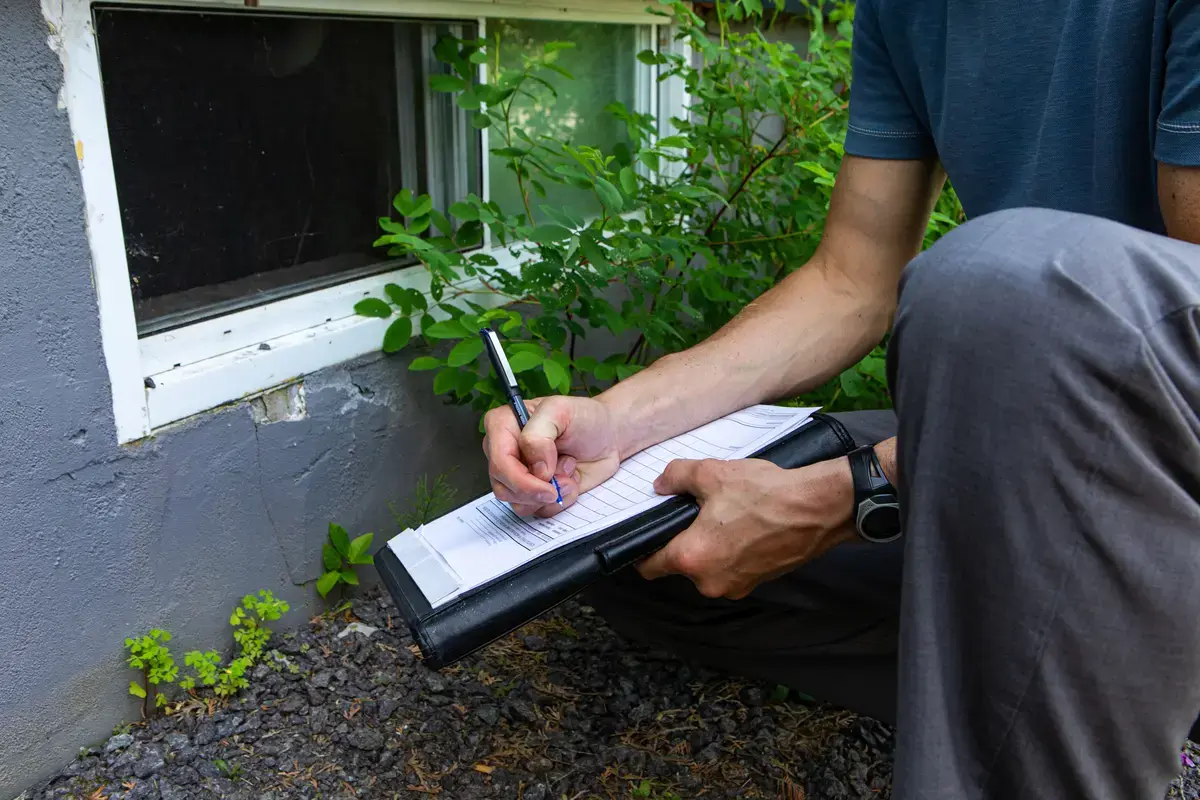Termite Inspection Reports: What’s Documented and Why It Matters
Suppose you are buying, selling, or refinancing a house, especially in states where termites are prevalent. Understanding what a termite inspection report contains and why it is important matters. It can eventually save you thousands of dollars.

Termite Inspection & Inspection Report
The termite inspection is a thorough professional assessment that looks into the presence of termites or other wood-destroying insects on a property. Licensed pest control professionals typically conduct this inspection because they are familiar with the process, as termites tend to work discreetly.
The inspection typically lasts between 1 and 2 hours, depending on the property’s size and condition. The inspector will examine the interior and exterior of the house, including the attic, basement, crawl spaces, and foundation.
When the inspection is completed, you will receive a report that covers:
- The presence of termites.
- Previous infestation signs.
- Any destruction caused by termites.
- Areas that are prone to future issues.
- Prevention measures or treatment recommendations.
What’s Contained in a Termite Inspection Report
Consider this report to be your bug-trap blueprint. It usually entails the following:
Inspection Summary
A summary of the presence of termites or wood-destroying organisms.
Findings
- Active infestations.
- History of infestation (even in case of a treated infestation).
- Obvious devastation caused.
Areas Inspected
The list of areas where inspections and investigations were held, including those that were not inaccessible.
Recommendations
Courses of action, repairs needed, or preventive measures.
Photographs
Pictures of destruction or infested places (if infestation is detected).
Inspector’s Credentials
The contact information, company name, and license number of the inspector.
What Happens if Termites are Found
Do not panic in case termites are discovered during the inspection. This is how it goes:
- Treatment estimate: An inspector will provide an estimate or recommend a specialist.
- Repairs: Before the sale can proceed, any necessary damage may need to be fixed.
- Re-inspection: In some cases, a re-check may be necessary after treatment.
As a buyer, you may negotiate with the seller. Request a price discount or ask the seller to remedy the cost of treatment.
Why Termite Inspection Counts More Than You Imagine
Many people consider termite inspection to be a formality or just another check mark, but it is much more. The following are some of the reasons why a termite inspection report is crucial:
Damage Caused by Termites is Expensive
The National Pest Management Association reports that termites cost property owners more than $6.8 billion yearly. And more than half are not covered by homeowners’ insurance.
It Is Usually Required for Closing
Most lenders or agents, on behalf of the buyer, will often require a termite inspection report for closing. It is typically referred to as a WDI (Wood-Destroying Insect) report. In its absence, you may fail to sign off on the mortgage or the sale.
Peace of mind for all Parties
A clean report translates into no worries for buyers. It is useful for the seller because it enhances their credibility and helps in quicker deals. One way or another, it fosters trust.
How Often Should You Get One
In states like Texas, Florida, or California, where humidity and warmth are prevalent, and termites thrive, it is advisable to obtain a termite inspection report every two years, even if you do not plan to move.
Homeowners wanting to sell like to have a pre-listing inspection (with termites) done so that they can know if their home is in good condition (to avoid delays or a surprise that ends the transaction).
Warning Signs You Cannot Ignore
When reading a termite inspection report, watch out for the following:
- References to mud tubes (evidence of termites that live underground).
- Hollow-sounding wood.
- Sagging floors or ceilings.
- Warped or peeling wallpaper or paint.
Even in the absence of the actual activity, previous infestations must be viewed seriously.
Tips to Prepare for a Termite Inspection
The inspector should be able to access all areas without difficulty. In this regard, please ensure that:
- Furniture should be moved away from the walls.
- Clean and clear crawl spaces.
- Prune shrubs or mulch that come into contact with the foundation of the home.
Taking these steps will result in quality and comprehensive inspections.
Final Thoughts
A termite inspection report is your safety plan. Whether purchasing a dream home or selling a home you’ve loved for so many years, knowledge about termite activity can safeguard your investment, finances, and peace of mind.
Don’t miss it, and don’t skip it. Read carefully, inquire, and, where necessary, take action.
Inspect360 provides detailed, fair, and comprehensible termite inspection reports for all types of homes and situations.
Call Inspect360 to book your inspection today because peace of mind begins with what you cannot see.
